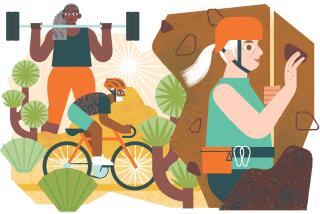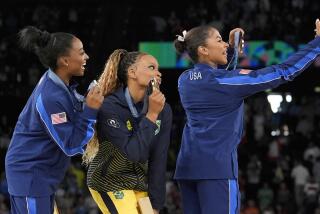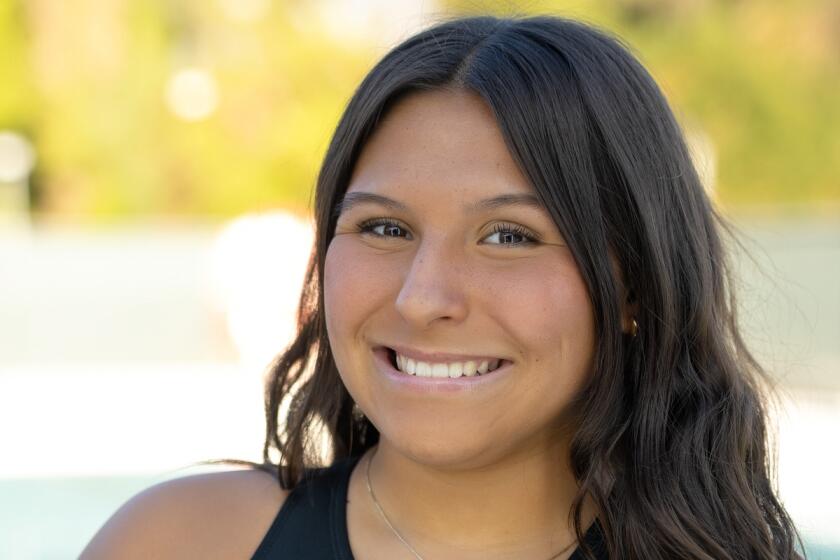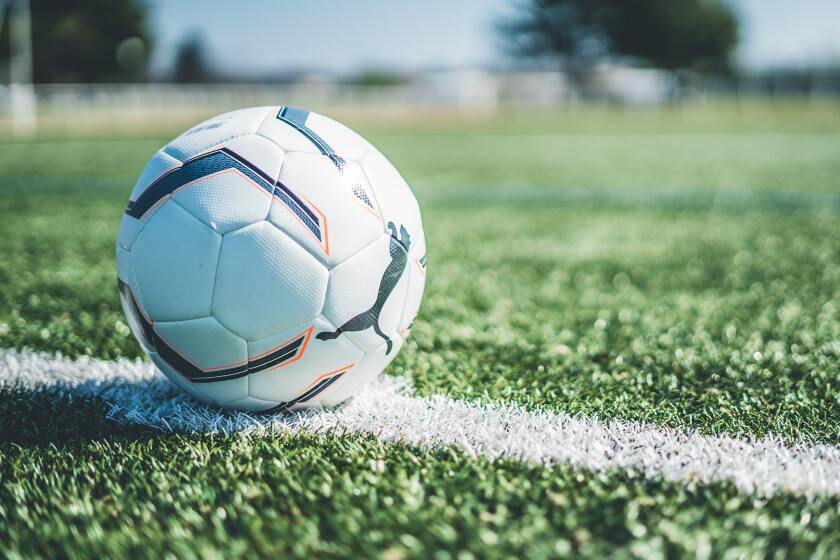Women and Sports Healthy Mix
- Share via
The recent health report that claims girls who were active in high school athletics grow up healthier than the average woman is not too surprising; physical exercise is beneficial to all age groups.
However, few studies outside academia and the medical field have focused on physically active women and the aging process. Most research has, in the past, concentrated on the lifestyle of male players to conclude that professional athletes who remain physically active live longer--and healthier--lives than the average population. Should not the same assumption apply to women?
Often, patterns of physical fitness are set in early childhood. From kindergarten on, youngsters learn to run and play, both for fun and for sport.
In California, the temperate weather is a boon to those who relish the great outdoors. Hiking is ours for the asking, and providing we can afford them, roller-blades come in grandmother sizes. And yet, few women exercise on a daily basis.
My friend Stella claims she is just not athletic; she putters in her garden most weekends. That is her only exercise. Her sister, Susan, however, lifts weights like a pro.
If weightlifting had been de rigueur in the old days, would fewer women suffer from osteoporosis?
As kids, my girlfriends and I played outdoors year-round. We kicked the can and dodged baseballs in the rock-strewn streets of Pacoima. Mostly we tagged along behind the boys--they were bigger and meaner--and so got to play in the middle of the street. Although we hit line drives and raced around first base, the boys made us play outfield, which was for dummies. We developed a love for the outdoors--and boys.
During the ‘50s at San Fernando High School, it was mandatory for girls to participate in sports. Basketball and volleyball were our favorites; they did not induce as much sweat as baseball and field hockey (which required the wearing of shin guards).
Young and agile, we played with great vigor. Yet few thought of making sports a profession, not even Gloria, a tall, lanky girl who sank the ball just like Rebecca Lobo.
In 10th grade, our volleyball team, nicknamed The Killers, was predominantly Mexican American (now and then we let in Anglos, but only if they were good). That year we smeared the 11th- and 12th-grade teams, which included our older siblings. I, being the loudest, was elected captain; I shouted strategy in Spanish (the forbidden language) and drove the teachers nuts. We played with a vengeance. We were hot!
And yet, off the field, we--the star athletes--were told to act like ladies and let the guys have all the glory.
“Never beat him at tennis,” was drilled into us, “because guys like to win.”
Being good at sports brought its own status. At that time, racism against minorities--Mexican Americans and blacks--was rampant in most schools; ours was no exception. If at times we were discriminated against (kept out of clubs or not invited to the right parties) we got even, not by fighting, but by winning at sports. During football games, the best (and best-looking) players were named Lopez, Garcia, Sierra. All raza.
*
Prior to the ‘60s, when being physically fit was “in,” few Mexican American women older than 20 took part in organized sports. The tradition was that once married with children, a woman’s role was to excel in the kitchen and cater to her husband. Exercise came in chasing kids or hiking alongside them at a Scout camp-out.
Women were not supposed to be athletic! Not until jogging became the national pastime did sedentary housewives commit to physical fitness and the perks (weight loss, glowing skin) it guaranteed.
Eager to be part of a trend, I invested in running shoes and sweats. My first 10K race took place at Griffith Park alongside Jim Fixx (he popularized the sport; his book on running became a best-seller). I was runner No. 1,089 and finished alongside a couple who looked to be in their 80s.
I’ve since run other races--and (predictably) come in last. Last spring, Ruben, one of my students at Mission College, was in training for the Los Angeles Marathon. He encouraged me to get in shape and join up.
Determined to stop the pull of gravity, I ran uphill in the canyon until I thought I’d drop. Two weeks before the race, I twisted my ankle. I was saved.
Still, it’s heartening to know that because some of us played sports in high school, we might stay healthier longer.
Just now, I hope to qualify for a women’s softball team being organized at Sunland Park. I won’t demand to be shortstop, let alone catcher, but gladly play the field.
Wham! Bam!
More to Read
Get our high school sports newsletter
Prep Rally is devoted to the SoCal high school sports experience, bringing you scores, stories and a behind-the-scenes look at what makes prep sports so popular.
You may occasionally receive promotional content from the Los Angeles Times.






